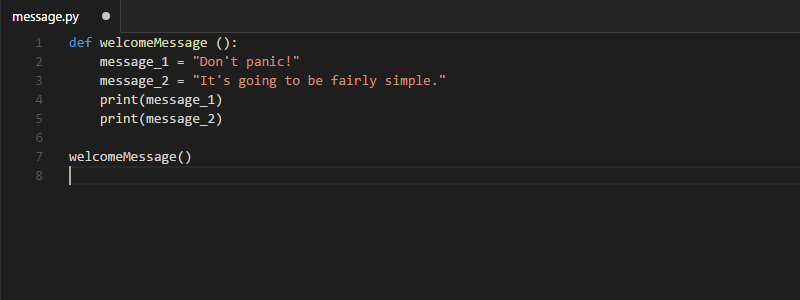During the final lecture, we’ll look at handling XML files with Python and how Python can be used to copy and move files.
The TECHS5 Programming for Technical Communicators course is an introductory programming course for technical writers. The course is aimed to give you an overview of the basic concepts of programming and teach you the basic skills you need to create your own scripts and programs later on. In addition to learning how to write simple programs that make your life easier, you’ll learn to recognize situations where a well-though-of script or program could save you a lot of manual work.
During the course, we’ll use the Python programming language and Notepad++ as our go-to tools. Python was selected mainly because the syntax of the language is fairly clear and, as an interpreted language, writing and testing your own scripts is nice, easy and fast. And Python’s fun, too. And there’s a world of Monty Python puns.
This page collects all lectures from 2017.
During lecture 6, we’ll take a look at how we can create our own functions in Python. We’ll learn how we can use functions and their return values to clean the structure of our scripts. We will also have a look at Python’s ElementTree module and see how we can use it to read XML files.
This time around, we’ll look at how to open, read and examine files. Then, we’ll look at how we can build our own functions and use them to clean up the structure of our programs.
The third lecture starts with a quick recap of what we learned last week. Then, we will take a look at the different data structures – lists, tuples and dictionaries – we have at our disposal, and start figuring out how and why we should use them. Once we’ve mastered them all, we’ll move on to loops, starting with the while loop.
If time permits, which it probably won’t, we’ll also have a look at for loops.

Lecture one starts from the very basics. First, we’ll take a look at why this course is on the curriculum (there’s a solid reason!) and have a brief look at all the fun things you’ll learn about during the course:
- Variables
- Playing with numbers
- Working with text
- Conditional statements
- Data structures
- Loops
- Functions
- File handling
After the introduction, we’ll jump straight into Python and get to know both the Python Shell and IDLE. We’ll then get acquainted with variables and start using them with numbers and do a (tiny) bit of math. Next, we’ll move onto text, or strings, and figure out how to print stuff, manipulate text and ask for user input in Python.
Download files: